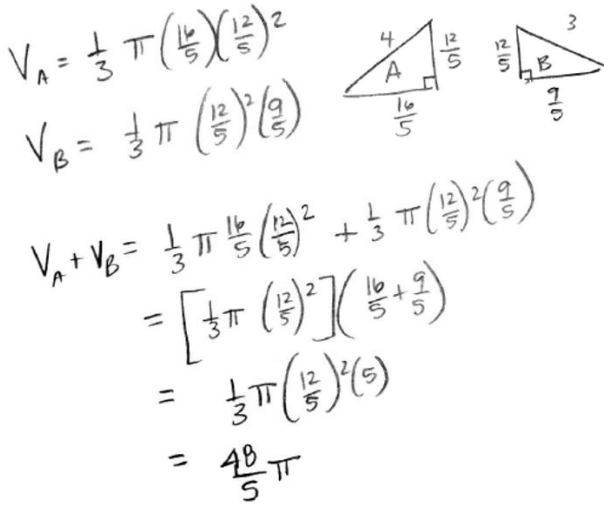Engage NY Eureka Math Geometry Module 3 End of Module Assessment Answer Key
Eureka Math Geometry Module 3 End of Module Assessment Answer Key
Question 1.
a. State the volume formula for a cylinder. Explain why the volume formula works.
Answer:
V = BH, where B is the area of the base Since a cylinder is composed of congruent disks (circles), then the height of the cylinder B Produced by the “stack” of disks. Congruent figures have equal area, so multiplying B × h gives the volume of a cylinder.
b. The volume formula for a pyramid is \(\frac{1}{3}\)Bh, where B is the area of the base and h is the height of the solid. Explain where the \(\frac{1}{3}\) comes from in the formula.
Answer:
If you consider a unit cube and a pyramid whose base is equal to |×| and whose height B \(\frac{1}{2}\), it would take 6 such pyramids to equal the volume of the cube. If you consider just half the volume of the cube, then we have a solid with volume \(\frac{1}{6}\), the pyramid, when compared \(\frac{1}{6}\) = ? × \(\frac{1}{2}\), the missing factor B \(\frac{1}{3}\). So the volume of the pyramid B \(\frac{1}{3}\) of the volume of the rectangular prism that B the same base and same height.
c. Explain how to use the volume formula of a pyramid to show that the volume formula of a circular cone is \(\frac{1}{3}\)πr2h, where r is the radius of the cone and h is the height of the cone.
Answer:
We can approximate the cone with a pyramid, so that the base of the pyramid is an n-sided polygon that approximates the base of the circular cone, and the height is the same as that of the cone, The volume of the pyramid can be expressed as \(\frac{1}{3}\)Bnh where Bn is the area of the polygonal base, and h is the height. As the number of sides approaches infinity, the value of Bn approaches πr2, where r is the radius of the circle within which the polygonal base B inscribed.
Question 2.
A circular cylinder has a radius between 5.50 and 6.00 cm and a volume of 225 cm3. Write an inequality that represents the range of possible heights the cylinder can have to meet this criterion to the nearest hundredth of a centimeter.
Answer:

Question 3.
A machine part is manufactured from a block of iron with circular cylindrical slots. The block of iron has a width of 14 in., a height of 16 in., and a length of 20 in. The number of cylinders drilled out of the block is determined by the weight of the leftover block, which must be less than 1,000 lb.
a. If iron has a weight of roughly 491 lb/ft3, how many cylinders with the same height as the block and with radius 2 in. must be drilled out of the block in order for the remaining solid to weigh less than 1,000 lb.?
Answer:
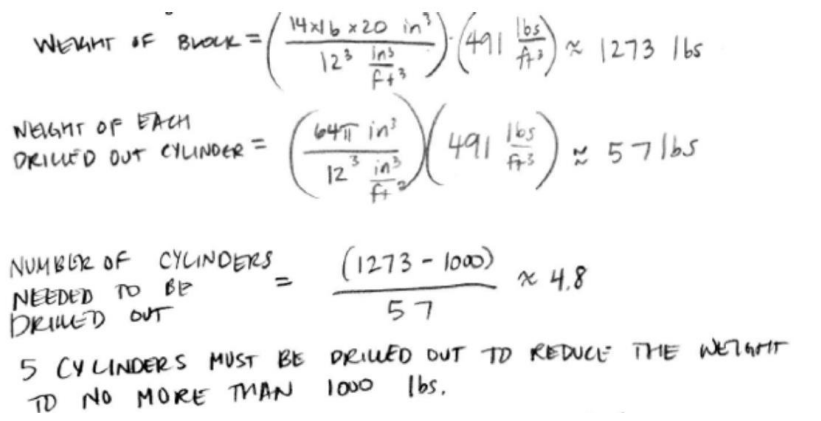
b. If iron ore costs $115 per ton (1 ton = 2200 lb.) and the price of each part is based solely on its weight of iron, how many parts can be purchased with $1,500? Explain your answer.
Answer:

Question 4.
Rice falling from an open bag piles up into a figure conical in shape with an approximate radius of 5 cm.
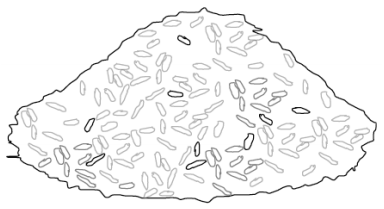
a. If the angle formed by the slant of the pile with the base is roughly 30°, write an expression that represents the volume of rice in the pile.
Answer:
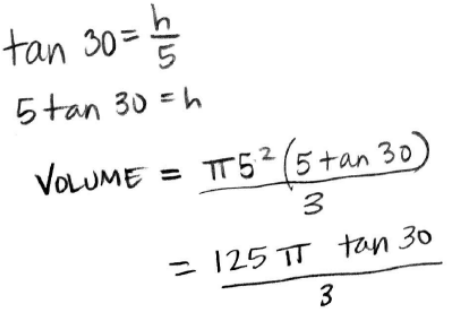
b. If there are approximately 20 grains of rice in a cubic centimeter, approximately how many grains of rice are in the pile? Round to the nearest whole grain.
Answer:
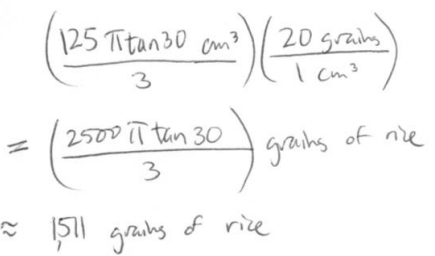
Question 5.
In a solid hemisphere, a cone is removed as shown. Calculate the volume of the resulting solid. In addition to your solution, explain the strategy you used in your solution.
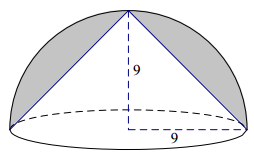
Answer:
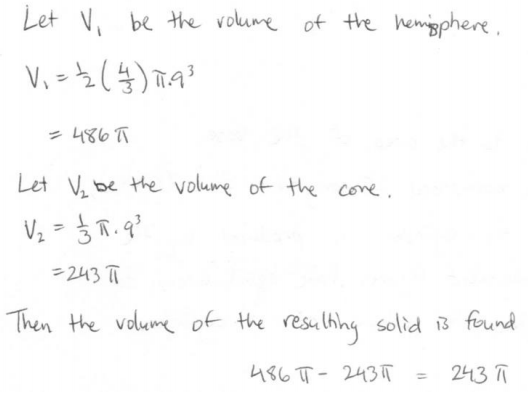
Question 6.
Describe the shape of the cross-section of each of the following objects.
Right circular cone:
a. Cut by a plane through the vertex and perpendicular to the base
Answer:
An isosceles triangle
Square pyramid:
b. Cut by a plane through the vertex and perpendicular to the base
Answer:
An isosceles triangle
c. Cut by a vertical plane that is parallel to an edge of the base but not passing through the vertex
Answer:
A trapezoid
Sphere with radius r:
d. Describe the radius of the circular cross-section created by a plane through the center of the sphere.
Answer:
The radius of the cross-section will be equal in length to the radius of the sphere.
e. Describe the radius of the circular cross-section cut by a plane that does not pass through the center of the sphere.
Answer:
The radius of the sphere B longer than the radius of the circular cross-section.
Triangular Prism:
f. Cut by a plane parallel to a base
Answer:
A triangle
g. Cut by a plane parallel to a face
Answer:
A rectangle
Question 7.
a. A 3 × 5 rectangle is revolved about one of its sides of length 5 to create a solid of revolution. Find the volume of the solid.
Answer:

b. A 3-4-5 right triangle is revolved about a leg of length 4 to create a solid of revolution. Describe the solid.
Answer:

c. A 3-4-5 right triangle is revolved about its legs to create two solids. Find the volume of each solid created.
Answer:

d. Show that the volume of the solid created by revolving a 3-4-5 triangle about its hypotenuse is \(\frac{48}{5}\)π.
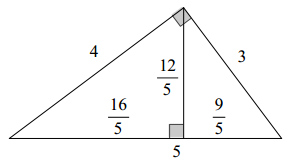
Answer:
